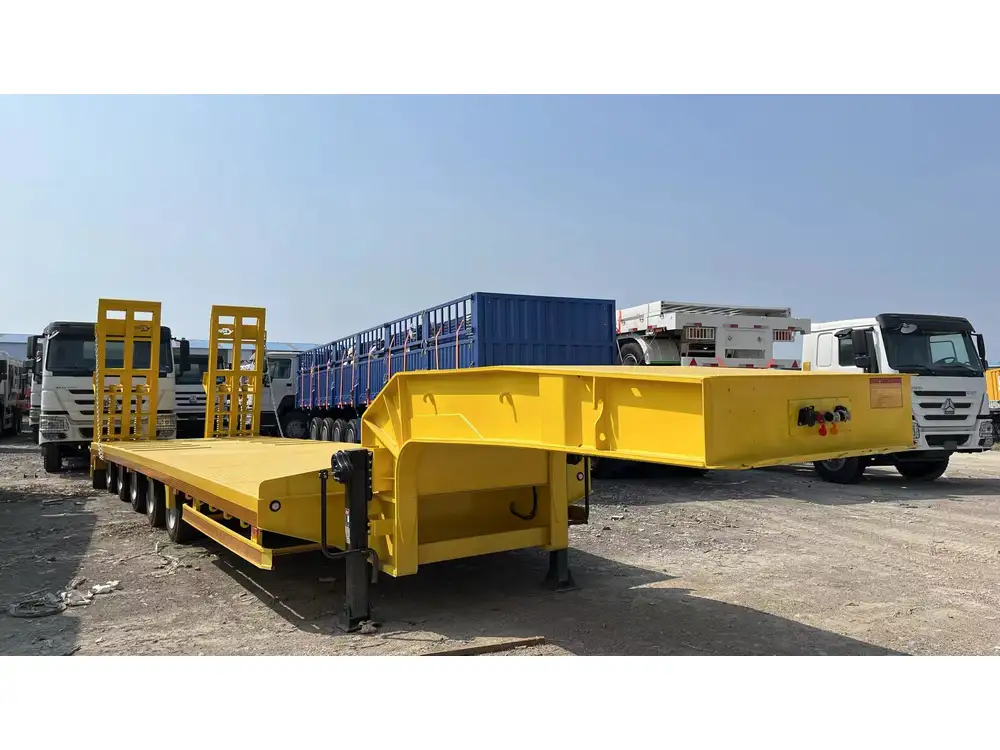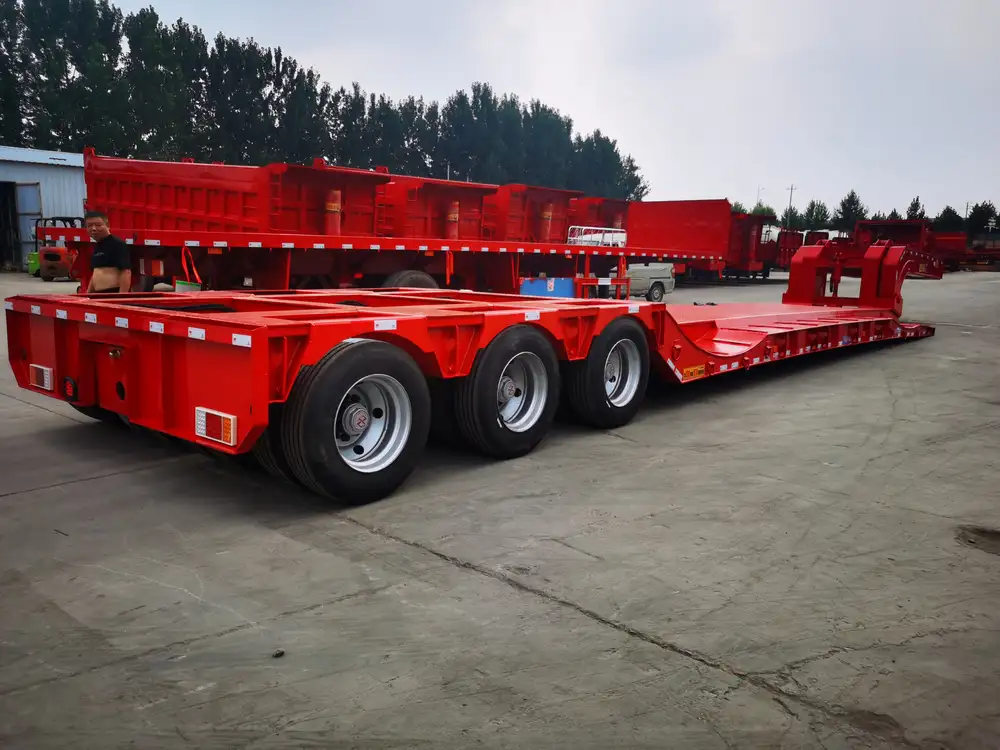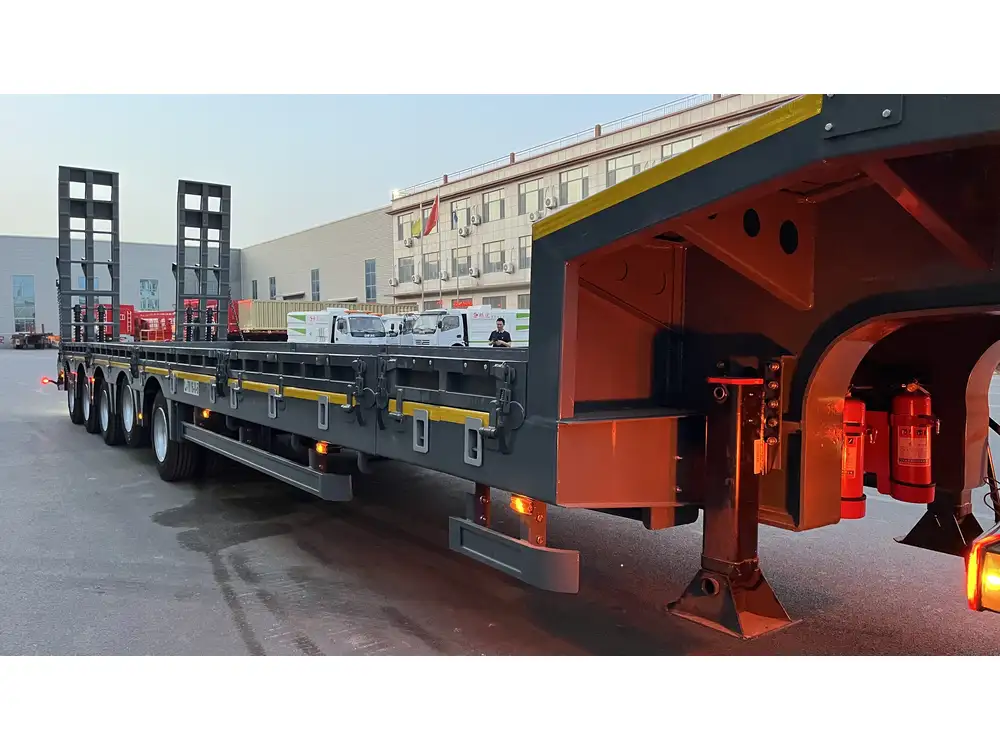Converting a horse trailer into a flatbed trailer is a project that can provide significant savings while maximizing utility. The process requires careful planning, a variety of tools, and some mechanical skill. This guide details steps, considerations, and specifications to assist you in transforming your horse trailer into a versatile flatbed trailer that meets various hauling needs.
Understanding the Basics of a Horse Trailer
Before diving into the conversion process, it is essential to understand the fundamental structure and purpose of a horse trailer. Horse trailers are specifically designed to transport horses, featuring:
- Sturdy Frame: Capable of supporting the weight of horses and additional gear.
- Enclosed Space: To safely secure the animals during transit.
- Dividing Walls: For accommodating multiple horses, ensuring their safety.
These elements can often be repurposed during conversion to enhance the functionality of your new flatbed trailer.
Materials and Tools Required
To start, gather the necessary materials and tools required for the conversion:

Materials
| Material | Description |
|---|---|
| Flatbed Steel Sheet | To create the trailer’s new flooring |
| Axle and Tires | Replace or upgrade for better capacity |
| Reinforcements | Steel rebar or angle iron for stability |
| Trailer Lights | Ensure proper visibility and safety |
| Paint/Protective Coating | To inhibit rust and enhance aesthetics |
Tools
| Tool | Purpose |
|---|---|
| Welder | For joining metal components |
| Angle Grinder | To cut and shape metal sheets |
| Drill | For making holes in metal for bolts/screws |
| Welding Helmet | Safety equipment essential for welding |
| Measuring Tape | Ensures accuracy in all measurements |
Step-by-Step Conversion Process

Step 1: Assess the Horse Trailer
Begin by evaluating your existing horse trailer. Look for potential issues such as rust, structural integrity of the frame, or damages. It is imperative to ensure the trailer is roadworthy.
Step 2: Remove Unnecessary Components
Once you confirm the trailer is suitable for conversion, start dismantling non-essential features like:
- Stall Dividers
- Mats
- Interior Walls
Use a drill to remove screws and bolts, or a cutting tool for welded components. Keep safety gear on to avoid injuries.
Step 3: Reinforce the Frame
After stripping the trailer, inspect the frame. Any signs of weakness should be addressed:
- Rust Repair: Sand down and treat rusty areas with appropriate anti-rust solutions.
- Additional Support: Add steel reinforcements to the frame’s corners, providing a sturdier base for the flatbed.

Step 4: Construct the Flatbed
Selecting the Base Material
Select a suitable material for the flatbed. Steel sheets are commonly used due to their durability. Depending on the intended use, you may prefer a heavier or lighter gauge.
Template Creation
Cut flat sheets to your desired dimensions. Ensure to create a snug fit for your trailer’s length and width, considering the additional weight limits.

Installation
- Welding: Attach the steel sheets to the trailer frame using a welder for stability.
- Bolting: For a modular approach, you can bolt the flatbed onto the frame. This allows for easier replacement or adjustment in the future if needed.
Step 5: Install New Axles and Tires
Depending on the weight you plan to haul, you might need to upgrade your trailer’s axle and tire system:
- Axles: Ensure they can handle the weight capacity you need.
- Tires: Depending on the new weight distribution, larger or more robust tires may be necessary.
- Alignment: Proper alignment is crucial to ensure safe towing.
Step 6: Incorporate Safety Features
Safety should always be a priority. Install necessary lighting and reflectors:
| Feature | Importance |
|---|---|
| Tail Lights | Essential for visibility during towing |
| Reflectors | Increases visibility in low-light settings |
| Brake Lights | Alert drivers when stopping |

Step 7: Final Touches
Finally, give your flatbed trailer a coat of paint or a protective finish to inhibit rust. Depending on the aesthetics you desire, you can choose colors or finishes that match your vehicle.
Validating Your Conversion
Before hitting the road, validate your conversion:
- Weight Distribution: Ensure even weight distribution across the flatbed.
- Towing Connection: Check the hitch to ensure it is secured and correctly aligned.
- Road Test: Conduct a low-speed road test, assessing the stability and handling of the trailer.
Common Conversion Challenges and Solutions
Though the conversion process can be straightforward, challenges may arise. Here’s how to navigate them effectively:
| Challenge | Solution |
|---|---|
| Misalignment of Axles | Double-check measurements and readjust as necessary |
| Heat During Welding | Use intermittent welding techniques to minimize warping |
| Weight Distribution Issues | Rebalance loads to ensure safe towing abilities |

Comparison of Converted Flatbed Trailer vs. New Purchase
Here’s a comparative analysis to help you decide whether to convert or buy a new flatbed trailer:
| Feature | Converted Trailer | New Trailer |
|---|---|---|
| Cost | Significantly lower (DIY) | Higher due to brand and materials |
| Customizability | Highly customizable | Limited custom options |
| Time Required | Varies based on skill level | Instant availability |
| Material Quality | Controlled by DIY choices | Typically higher-grade materials |
| Maintenance | Potential ongoing repairs | Warranty may cover issues |
Advantages of Using a Flatbed Trailer
Converting a horse trailer into a flatbed opens up various opportunities. Here are the benefits:
- Increased Versatility: Transport equipment, furniture, or construction materials.
- Cost Efficiency: Revenues generated from diverse hauling opportunities.
- Portability: A lightweight and easy-to-tow option for various vehicles.
Conclusion
Converting a horse trailer into a flatbed trailer can be a fulfilling venture, offering both cost savings and the flexibility to meet diverse hauling needs. By following this comprehensive guide, including clear steps, considerations for safety, and an assessment of challenges, you can successfully transform your horse trailer into a practical and efficient flatbed. Embrace the journey of DIY expertise as you innovate and adapt your trailer to fit your lifestyle.
With these insights and knowledge, we trust that you can undertake your conversion project with confidence, turning your original horse trailer into a flatbed that not only serves your practical needs but also stands as a testament to your skills and creativity. Happy hauling!



